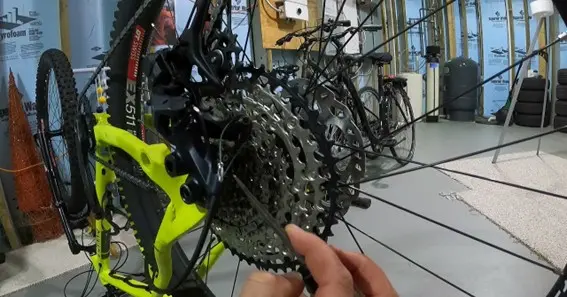Cycling enthusiasts and professionals often inquire, “Why doesn’t Shimano produce a 12-speed LinkGlide drivetrain?” Understanding the reasoning behind this decision requires an examination of Shimano’s LinkGlide technology, its intended applications, and the company’s strategic choices in drivetrain offerings.
Understanding Shimano’s LinkGlide Technology
Introduced to enhance drivetrain longevity and performance, Shimano’s LinkGlide technology focuses on creating more durable and smoother-shifting components. This innovation is particularly beneficial for high-torque applications, such as e-bikes, and for riders seeking low-maintenance solutions. LinkGlide cassettes feature thicker, more robust teeth and redesigned shift ramps, resulting in a claimed threefold increase in durability compared to standard HyperGlide systems.
The Decision to Limit LinkGlide to 10 and 11 Speeds
Several factors contribute to Shimano’s choice to offer LinkGlide technology exclusively in 10 and 11-speed configurations:
-
Durability Over Gear Range
LinkGlide prioritizes component longevity and reliability. By focusing on 10 and 11-speed systems, Shimano can utilize more substantial materials and simpler designs, reducing wear and tear. Expanding to a 12-speed system would require narrower spacing and lighter materials, potentially compromising the durability that LinkGlide aims to provide.
-
Compatibility with Existing Freehub Bodies
LinkGlide cassettes are designed to fit standard HyperGlide (HG) freehub bodies, which are widely used and allow for easy upgrades without changing wheelsets. In contrast, Shimano’s 12-speed systems typically require a MicroSpline freehub body to accommodate a 10-tooth smallest cog. Staying with 10 and 11-speed configurations ensures broader compatibility and simplifies the upgrade process for riders.
-
Target Audience and Use Case
The primary users of LinkGlide technology include e-bike riders and those prioritizing low-maintenance, durable drivetrains. For these riders, the slight increase in gear range offered by a 12-speed system is less critical than the robustness and longevity of the components. Therefore, Shimano focuses on optimizing 10 and 11-speed systems to meet the specific needs of this audience.
Conclusion
Shimano’s decision to limit LinkGlide technology to 10 and 11-speed drivetrains is a strategic choice centered on maximizing durability, ensuring broad compatibility, and meeting the specific needs of their target users. By focusing on these configurations, Shimano provides reliable, long-lasting drivetrain solutions for riders who prioritize longevity and low maintenance over the expanded gear range of 12-speed systems.
Frequently Asked Questions
1. Can I use a 12-speed chain with a LinkGlide cassette?
No, LinkGlide cassettes are designed for use with 10 or 11-speed chains corresponding to their specific configurations. Using a 12-speed chain may result in suboptimal performance and increased wear.
2. Is Shimano planning to release a 12-speed LinkGlide system in the future?
As of now, Shimano has not announced plans to develop a 12-speed LinkGlide drivetrain. Their current focus remains on enhancing the durability and performance of existing 10 and 11-speed systems.
3. What are the main differences between LinkGlide and HyperGlide+ technologies?
LinkGlide emphasizes durability and smooth shifting under load, making it ideal for e-bikes and riders seeking low-maintenance drivetrains. HyperGlide+ focuses on rapid, precise shifting and is favored by performance-oriented riders.
4. Can I upgrade my current 11-speed HyperGlide system to an 11-speed LinkGlide system?
Upgrading to LinkGlide requires replacing the cassette, derailleur, and shifter, as LinkGlide components are specifically designed to work together. However, they are compatible with standard HG freehub bodies, so wheel replacement is not necessary.
5. Are LinkGlide components heavier than their HyperGlide+ counterparts?
Yes, LinkGlide components, particularly cassettes, are generally heavier due to their robust construction aimed at enhancing durability. This weight difference is often negligible for riders prioritizing longevity and reliability.










